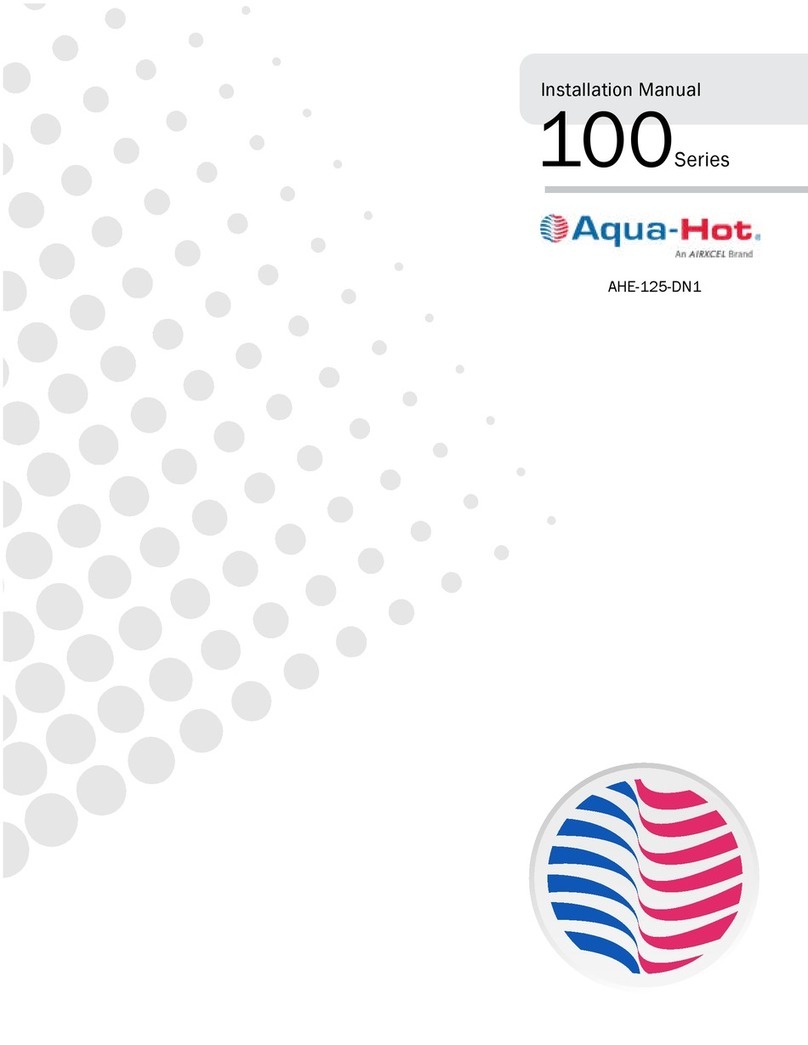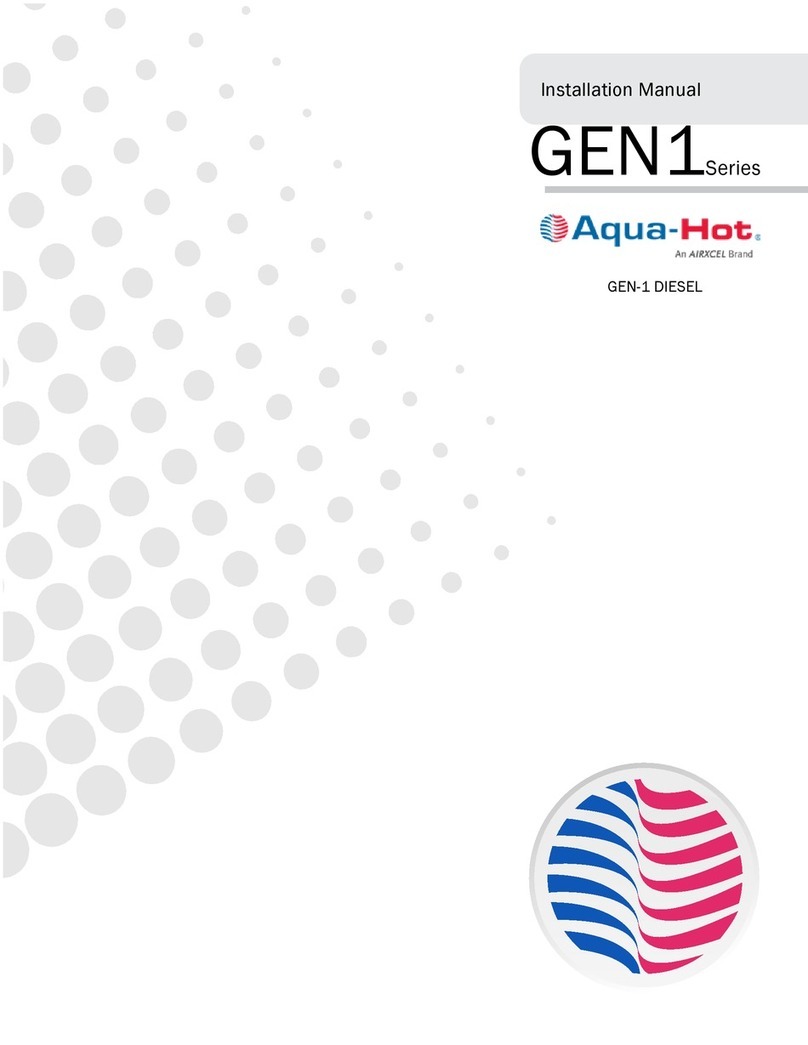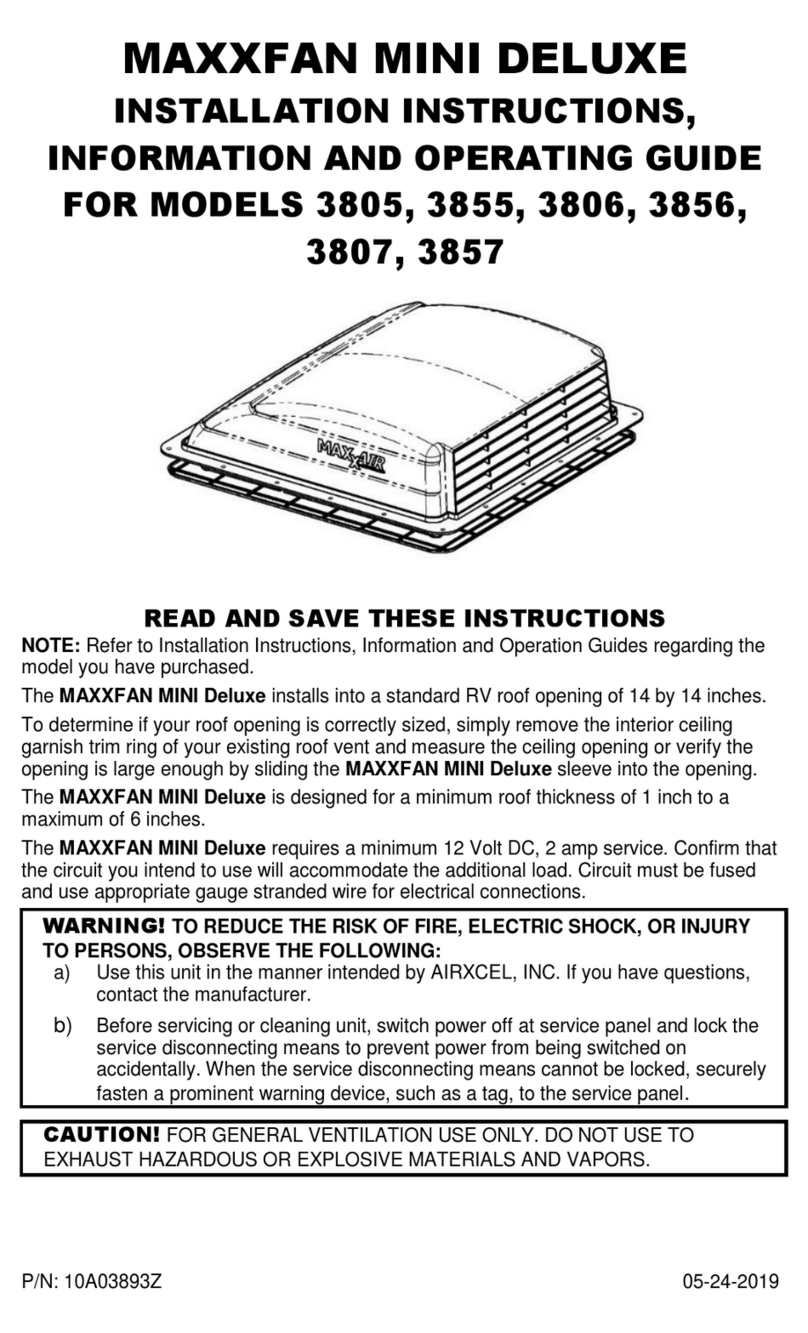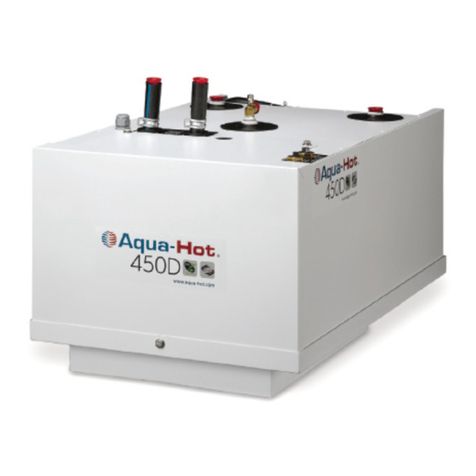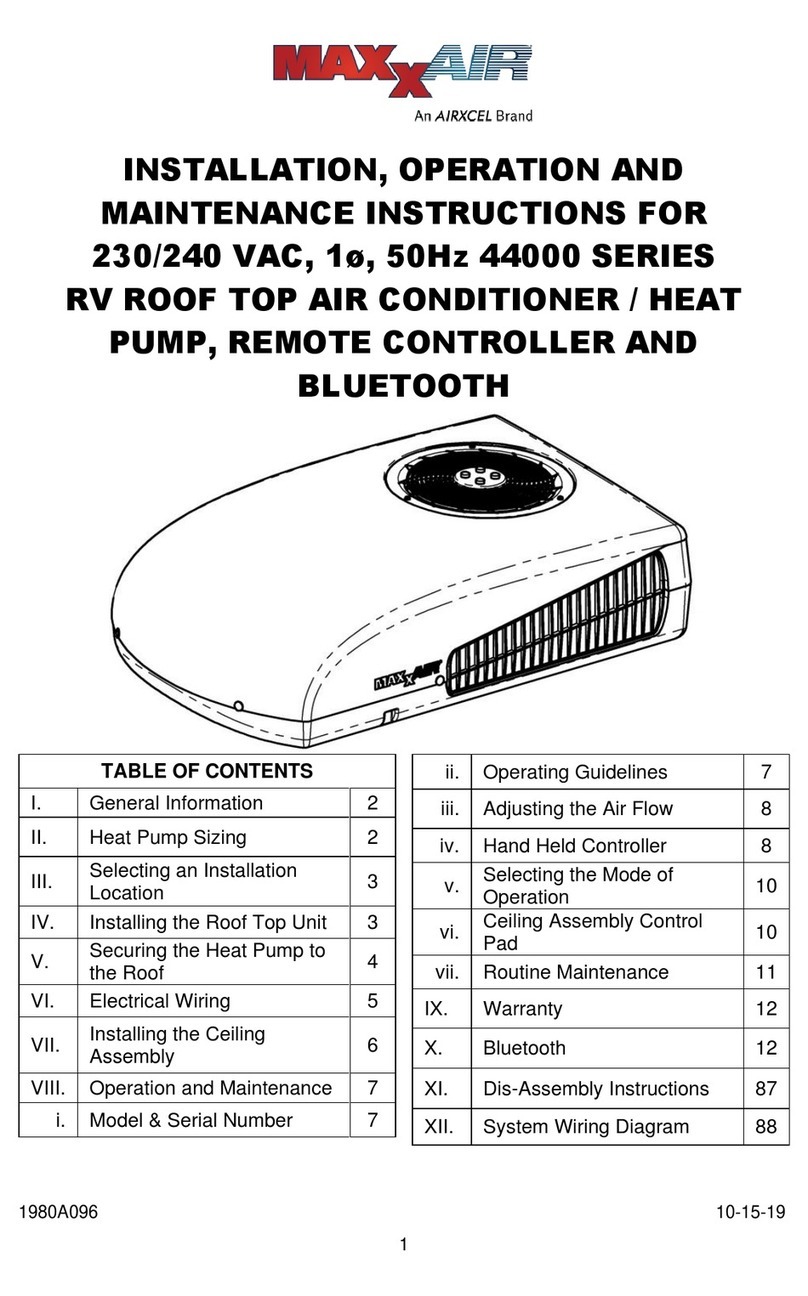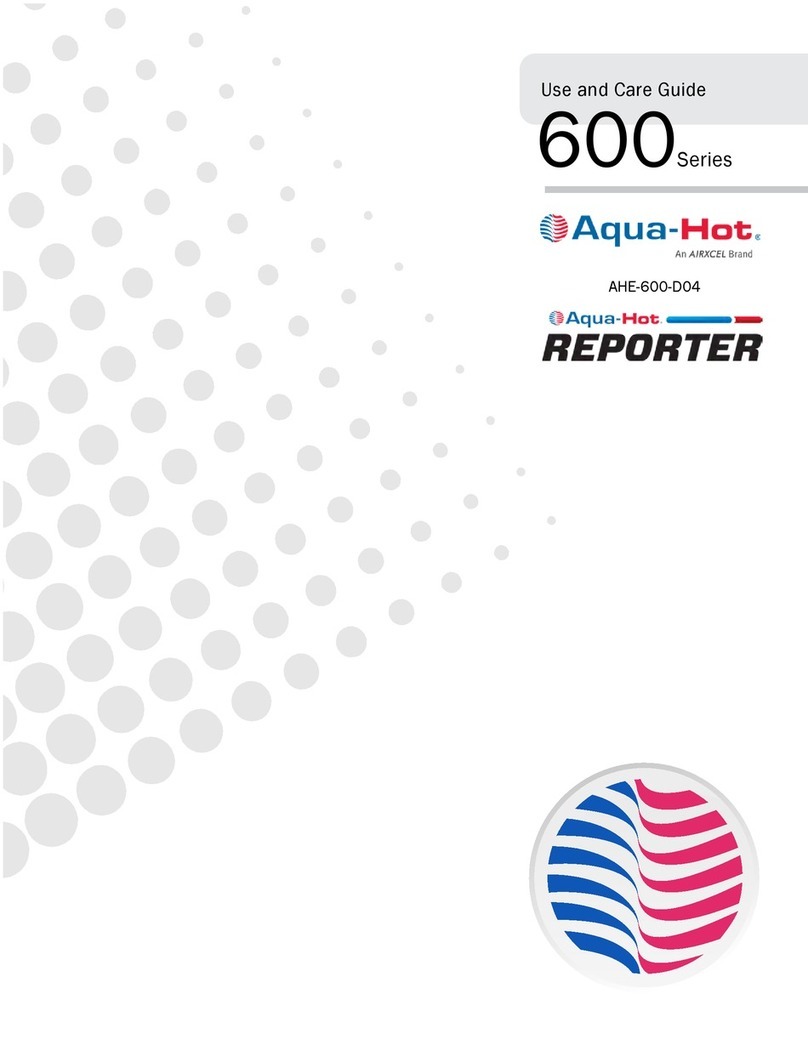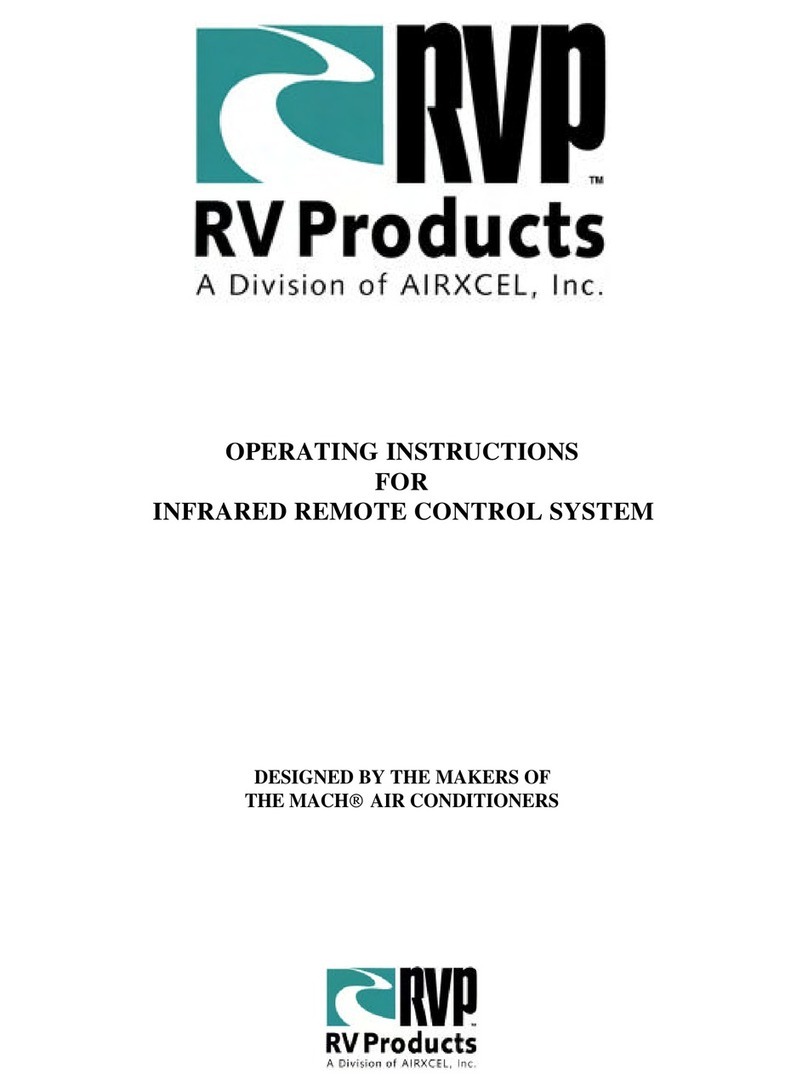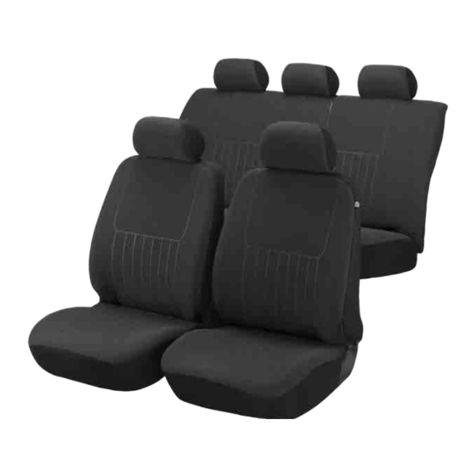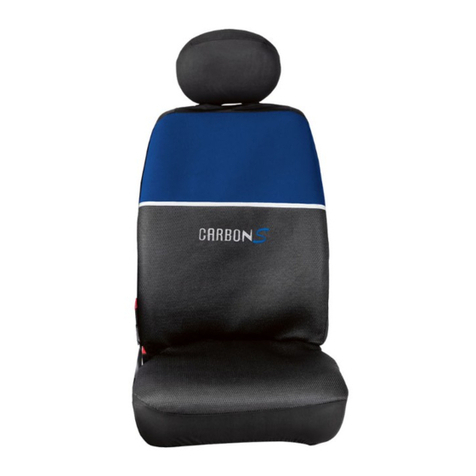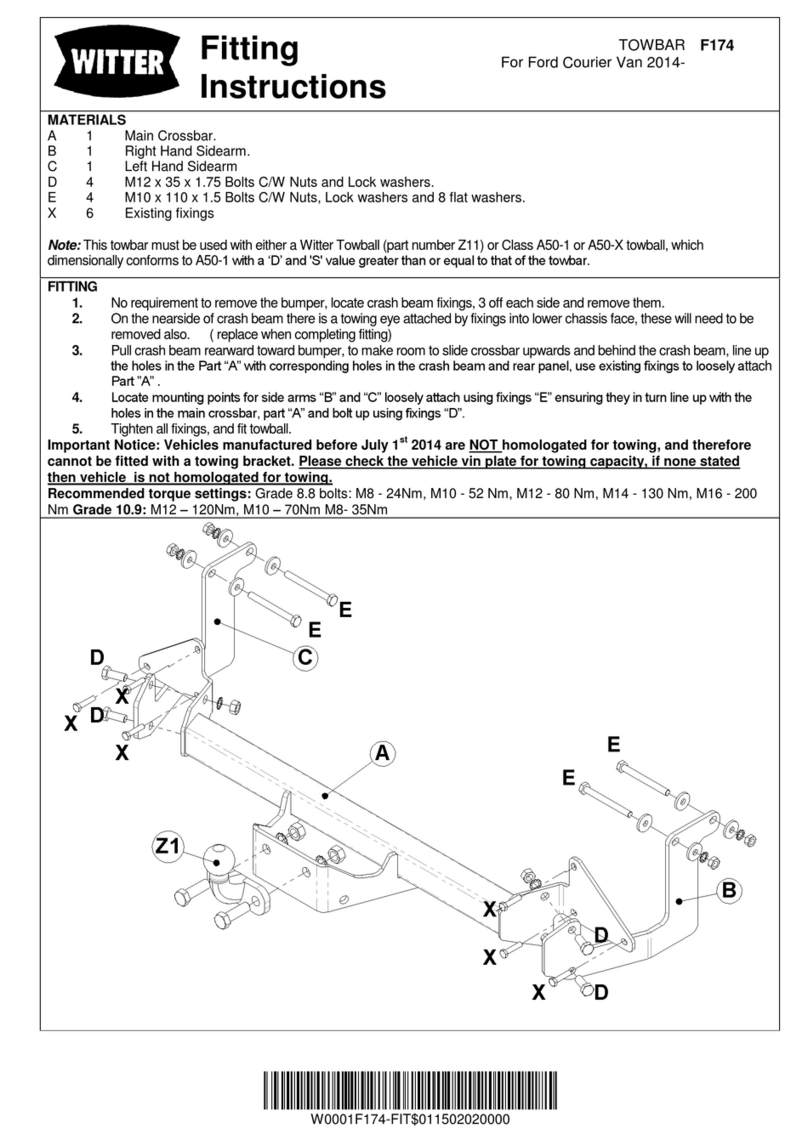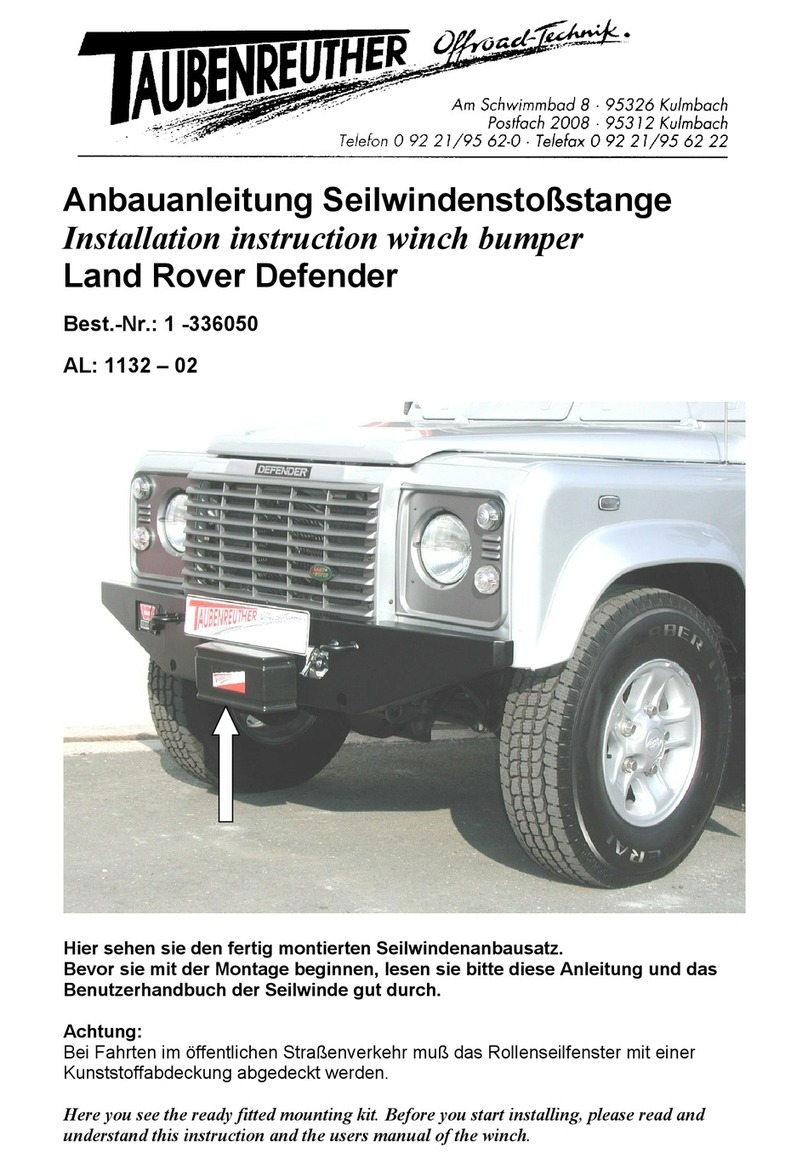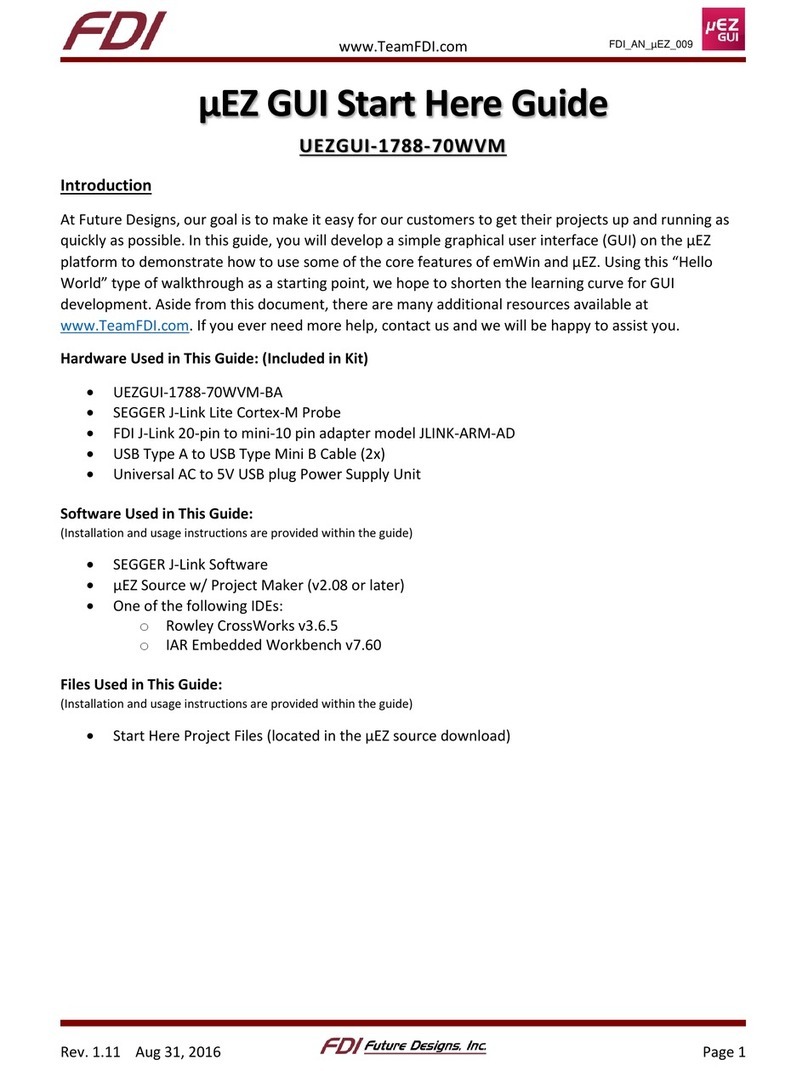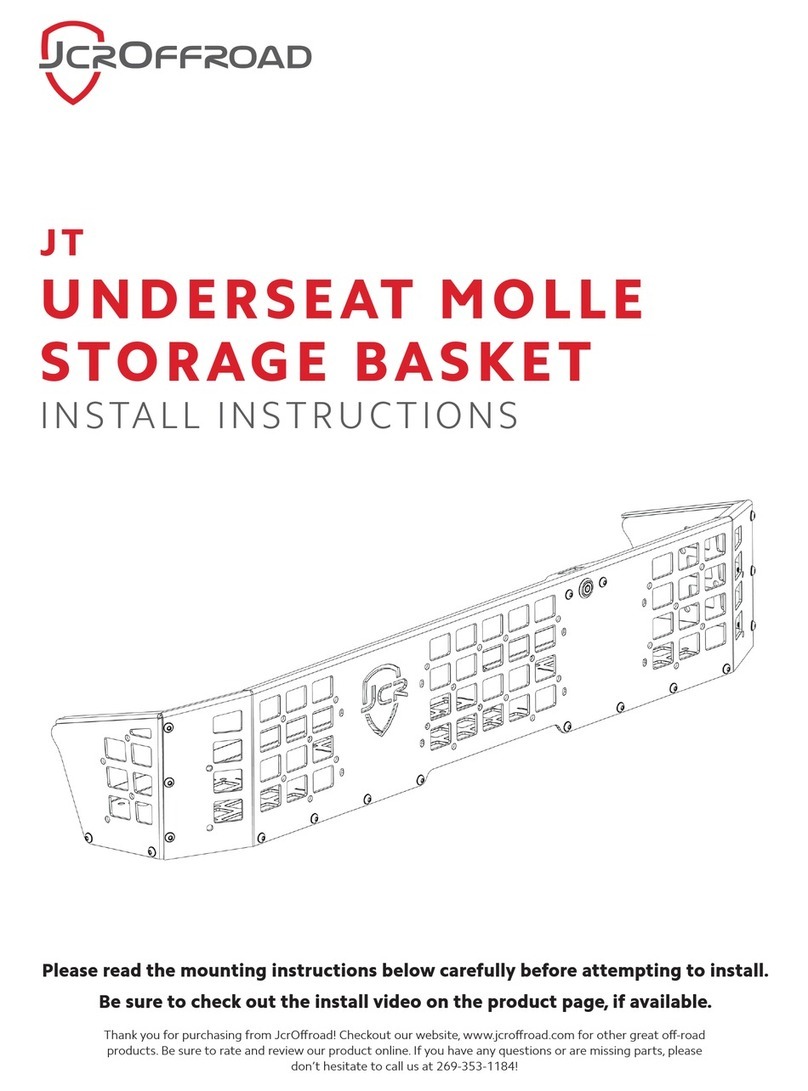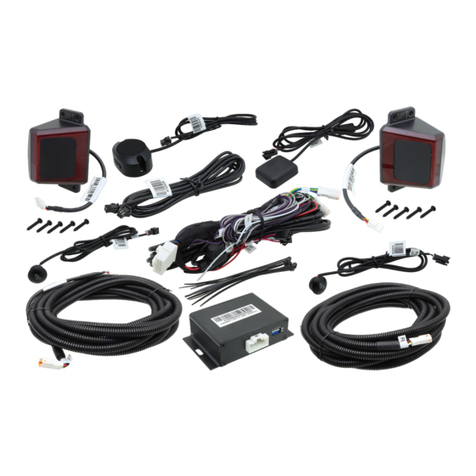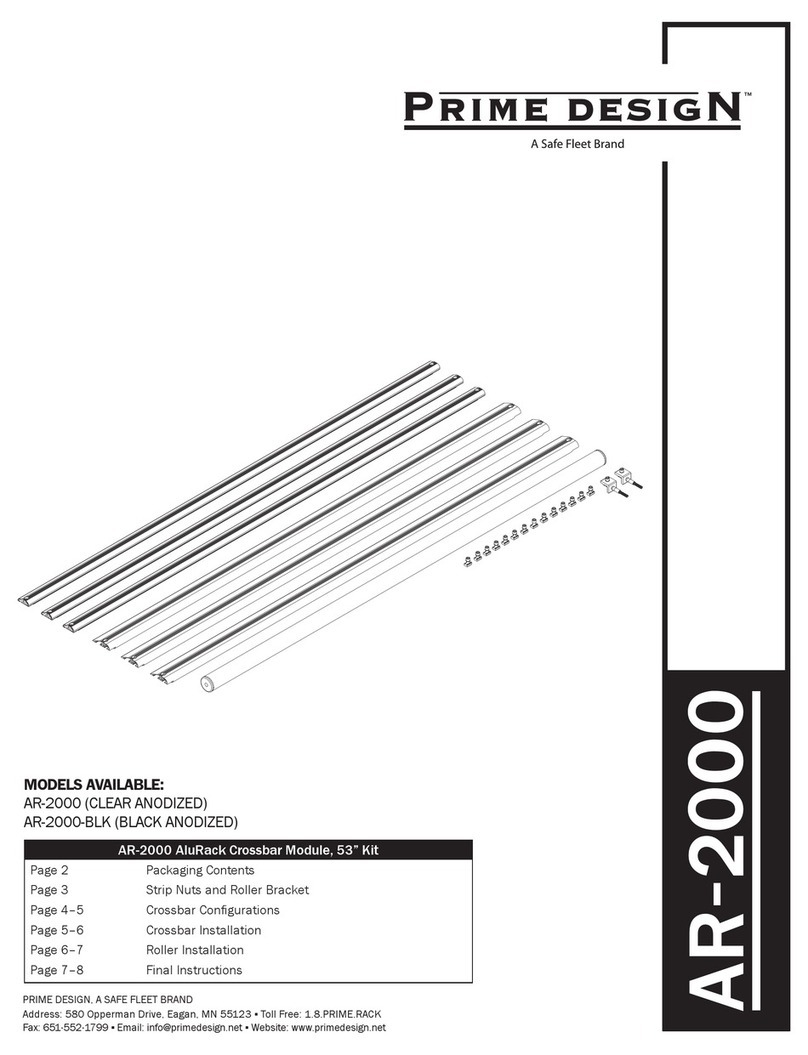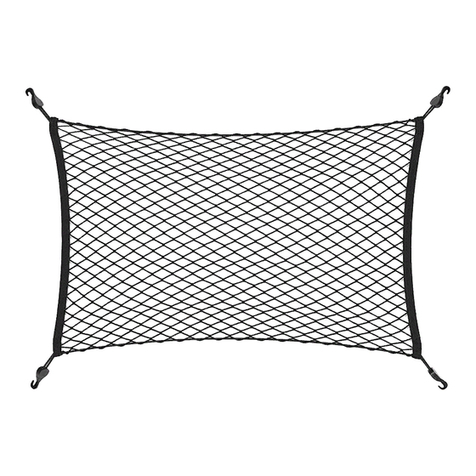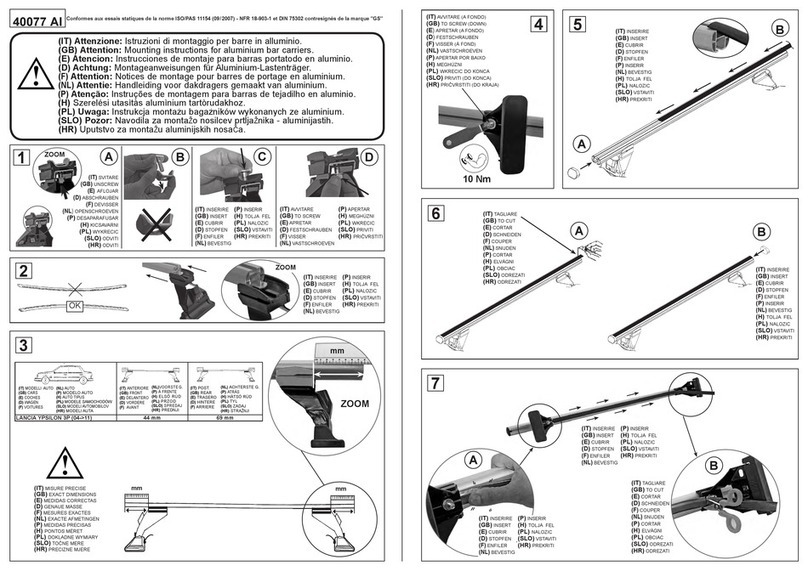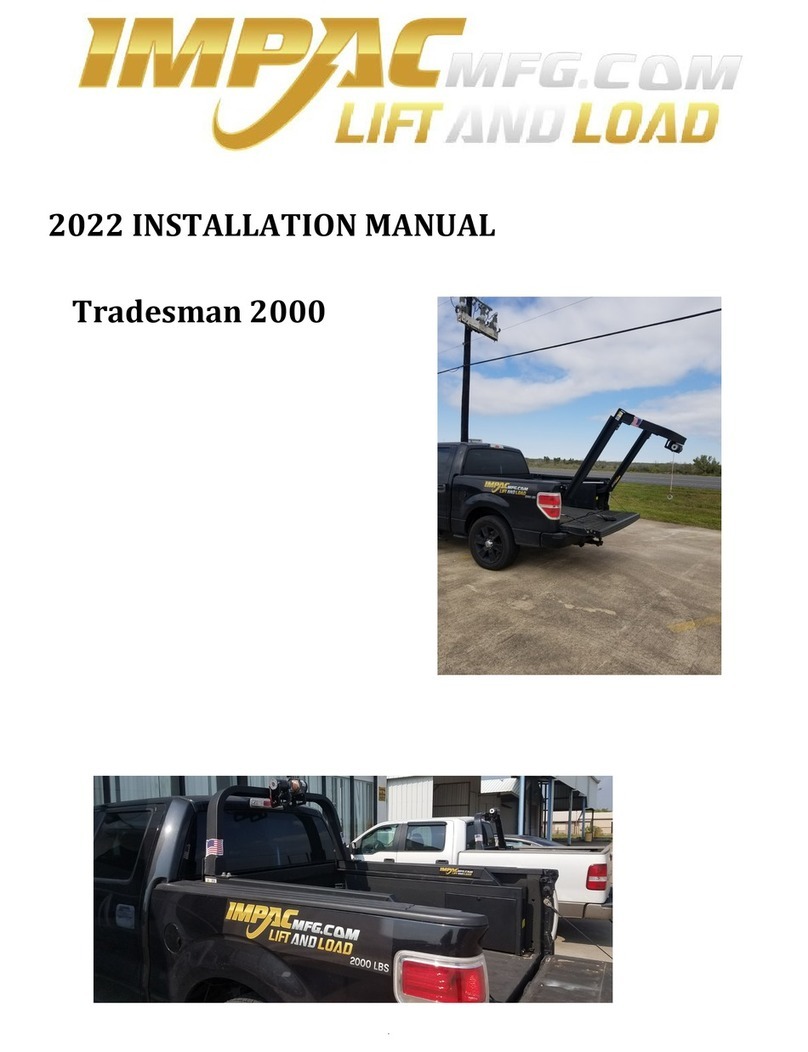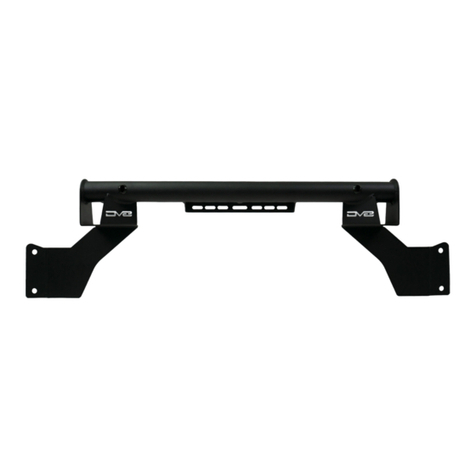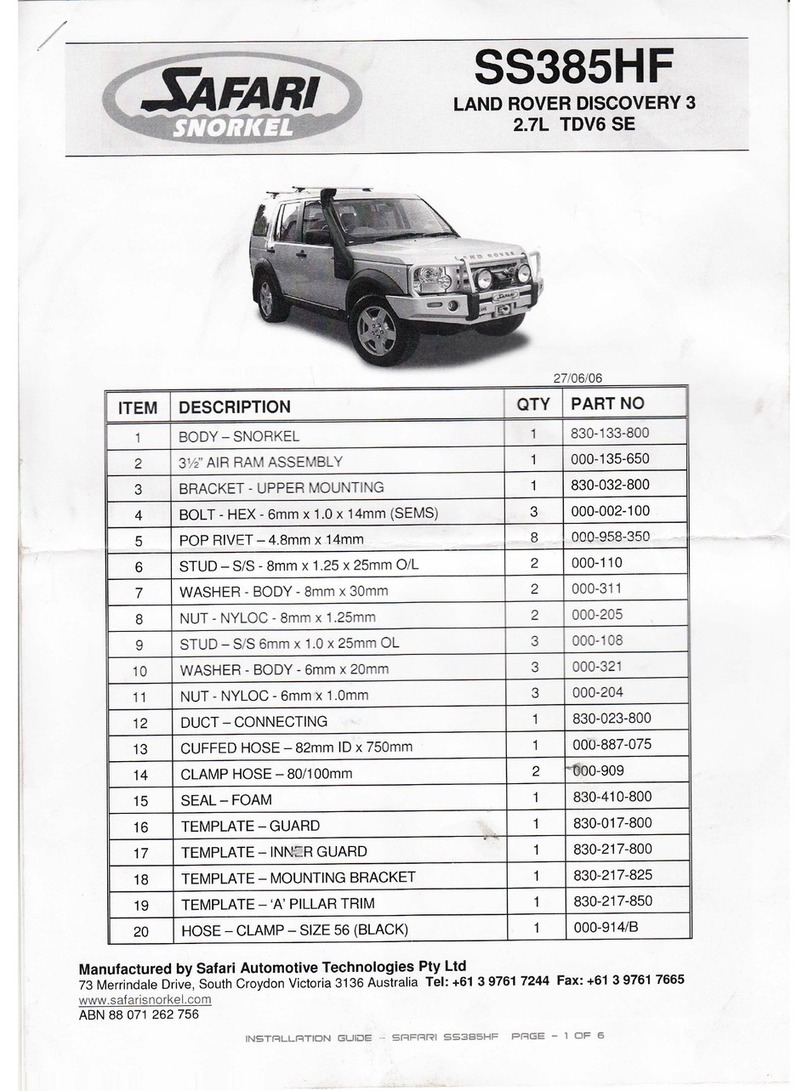
System FeaturesIntroduction
©Aqua-Hot® 125-DN1 Service Manual
REV 220421
©Aqua-Hot® 125-DN1 Service Manual
REV 220421
p. 7p. 6
Maintenance Schedule
Monthly Maintenance
Check the Aqua-Hot’s antifreeze and distilled water heating
solution to ensure that it is at the proper level. This can be
accomplished by visually checking the coolant level in the Aqua-
Hot’s expansion bottle; reference Figure 84 on page 41.
Please note that the coolant level should be checked ONLY
when the Aqua-Hot is at maximum operating temperature.
This should be done immediately after the electric element
disengages, or after the diesel burner has completed a cycle.
At maximum operating temperature, the antifreeze and distilled
water heating solution should be at the level marked “HOT” on
the expansion bottle.
It is also recommended to run the diesel burner once a month
for a full cycle (at least 20 minutes) to ensure optimum heater
condition.
Annual Maintenance
To maintain the Aqua-Hot at its full potential, it is highly
recommended to have the diesel burner tuned up annually. This
involves the fuel lter replaced, burner cleaned, inspecting the
exhaust and combustion air lines for damage and ensure they
are clear, checking the fuel lines for any leaks, checking the
hoses and wiring to make sure there is no damage or cracks.
Replenishing the Antifreeze and Water Heating
Solution
If the antifreeze and distilled water heating solution needs
replenishing, remove the cap for the expansion bottle and ll
it to the “HOT” mark (only when the tank is to temperature).
Replace the expansion bottle cap when this is complete. DO
NOT operate the unit without rst replacing the cap of the
bottle. Reference Figure 84 for additional information. Excess
air will escape through this bottle as the stir pump of the unit
operates. While bleeding this system of air, it will be necessary
to continue to ll the bottle until this process is complete.
Reference the Appendix on page 55 for the proper tool and
instructions for usage in measuring the system’s antifreeze
mixture ratio.
The Aqua-Hot does not need regular replacement of the
ethylene glycol antifreeze and distilled water heating solution,
but in the event that more antifreeze is required, contact Aqua-
Hot Heating Systems to purchase antifreeze, or for guidance
in selecting an appropriate antifreeze product for use with this
unit.
When the Aqua-Hot is at maximum operating temperature,
the coolant is very hot. If the Aqua-Hot heating system is
accessed, scalding by hot vapor or coolant may occur.
Before cleaning or servicing, disconnect all power supplies.
DO NOT operate the diesel burner and/or electric heating
element without antifreeze and distilled water heating
solution present in the Aqua-Hot’s boiler tank. Doing so will
cause serious damage to the heater.
Overheat Protection
Every Aqua-Hot is equipped with at least two overheat
protection devices. These are commonly known as the high-
limit thermostats. These thermostats operate by maintaining a
circuit while the unit is below 218°F.
In the event of an overheat condition, the high limit
thermostats will cut the operating signal to the diesel burner,
and/or the electric element. When this signal is interrupted, the
electric element and diesel burner will immediately disengage.
Contact Aqua-Hot Heating Systems LLC for assistance in
locating a qualied person to service this heater after an
overheat situation.
In order to provide the best freeze protection, boil-over
protection, anti-corrosion, and rust protection, a mixture
of 50/50 ethylene glycol antifreeze and distilled water is
recommended. The Aqua-Hot 125DN boiler tank holds
approximately 1.8 gallons.
The mixture may be modied to provide the most adequate
freezing, boiling, and rust/anti-corrosive protection. A 50/50
mixture of ethylene glycol and distilled water has a freeze point
of approximately -35°F and a boiling point of approximately
223°F. Refer to the table below to determine the best protection
mixture ratio. Reference page 55 for measuring the antifreeze
mixture with a refractometer.
Freeze
Point (°F)
Concen-
tration (%)
32 25 20 15 10 5 0 -10 -20 -30 -40 -50
010 16 21 25 29 33 39 44 48 52 56
Ethylene Glycol
DO NOT attempt to reset the high-limit thermostats after
an overheat condition until the unit has been serviced by a
qualied technician. Failure to do so could result in damage
to the unit, personal injury, or death.
All vehicle installations must comply with the requirements
listed in the Recreational Vehicle Industry Association’s
(RVIA) ANSI/NFPA 1192 Handbook for Recreational Vehicle
Standards.
Figure 6
NOTE: This product label is attached to the side of the
Aqua-Hot and provides a ready reference to specications,
test standards, and important safety notices.
Maintenance Schedule
System Specications
Electric Element
Power Consumption......................................1500 W (maximum)
Voltage ..............................................................................120V AC
DC Power
Consumption ..................................................... 84 W (maximum)
Zone Heat Circulation
Pumps...........................................................................................1
Power Consumption (max)............................................... 21W/7A
Voltage ............................................................................... 12V DC
Interior Heating
Maximum Heating Zones.............................................................3
Cozy........................................................6W/0.5A - 8,000 BTU/hr
Whisper............................................4.5W/0.37A - 4,000 BTU/hr
H.E. II...................................................3W/0.25A - 4,000 BTU/hr
Domestic Water Heating
Maximum......................................................................... 0.8 GPM
Physical Specications
Dimensions (US)..............................17.66”L x 7.50”W x 11.50”H
Dry Weight ............................................................................45lbs.
Wet Weight............................................................................59lbs.
NOTE: Control Panel “Quiet Mode” reduces heat exchanger power
consumption by 20%

